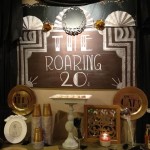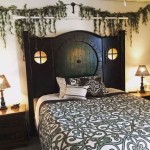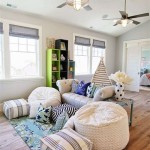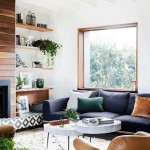How To Decorate an Old House On a Budget
Decorating an old house presents unique challenges and opportunities. While the charm of period details and architectural character is undeniable, the financial realities of updating and furnishing an older home often necessitate budget-conscious strategies. This guide offers advice on how to decorate an old house without breaking the bank, focusing on intelligent planning, resourceful sourcing, and DIY techniques.
Embrace and Highlight Existing Character
Before embarking on any significant alterations, it is crucial to assess and appreciate the existing character of the house. Older homes often possess unique architectural features that are expensive or impossible to replicate in modern construction. These features can include original hardwood floors, ornate moldings, fireplaces, built-in cabinetry, and stained-glass windows.
Instead of concealing or removing these elements, consider how to enhance them. Refinishing hardwood floors, for instance, can dramatically improve the appearance of a room at a fraction of the cost of installing new flooring. Similarly, cleaning and repainting original moldings can restore their elegance and highlight their intricate details. A fresh coat of paint alone can transform a room and showcase original architectural details.
Examine the existing color palette of the house. Older homes often benefit from colors that complement their architectural style. Research historically accurate paint colors for the period of the house's construction and consider incorporating them into your design scheme. This approach not only respects the house's history but also creates a cohesive and harmonious look.
Original hardware, such as doorknobs, hinges, and light fixtures, can also add character and charm. Instead of replacing them with modern alternatives, consider cleaning and polishing them to restore their original luster. If replacement is necessary, explore salvage yards and antique stores for period-appropriate hardware at a fraction of the cost of new reproductions.
Pay attention to the windows. If original windows are in good condition, focus on improving their energy efficiency through weatherstripping and caulking. Consider adding window treatments that complement the architectural style of the house. Simple, elegant curtains or blinds can enhance the look of the windows without overwhelming the space.
Prioritize and Plan Strategically
A well-defined plan is essential for decorating an old house on a budget. Before making any purchases or starting any projects, take the time to assess your needs, establish a budget, and prioritize your goals. Consider which areas of the house require the most attention and which projects will have the greatest impact.
Create a room-by-room plan, outlining the specific items you need and the desired aesthetic. This plan should include everything from paint colors and furniture to lighting fixtures and accessories. By having a clear vision, you can avoid impulse purchases and ensure that your decorating efforts are focused and efficient.
Prioritize projects based on their impact and cost. Start with the most essential repairs and renovations, such as addressing structural issues or fixing leaky roofs. Once these critical tasks are completed, you can focus on cosmetic improvements, such as painting, flooring, and furniture.
Set a realistic budget for each project and track your spending carefully. Divide your budget into categories, such as paint, furniture, lighting, and accessories, and allocate funds accordingly. Be prepared to adjust your budget as needed, but always strive to stay within your overall financial limits.
Consider tackling projects in phases. This approach allows you to spread out the cost of decorating over time and avoids overwhelming your budget. Start with one room or one area of the house and gradually work your way through the remaining spaces. This staggered approach also provides an opportunity to learn from your mistakes and refine your design aesthetic.
Source Materials and Furnishings Resourcefully
One of the keys to decorating an old house on a budget is to be resourceful in sourcing materials and furnishings. Explore alternative options to buying everything new, such as shopping at thrift stores, antique shops, flea markets, and online marketplaces.
Thrift stores and antique shops are treasure troves of unique and affordable furnishings. Look for items that are well-made and have potential, even if they require some restoration or refinishing. With a little creativity and effort, you can transform used furniture into stylish and personalized pieces.
Flea markets are another great source for vintage and antique finds. Bargain hunting is essential, and be prepared to negotiate prices. Look for items that complement the architectural style of your house and add character to your décor.
Online marketplaces, such as Craigslist, Facebook Marketplace, and eBay, offer a wide selection of used furniture and home décor items at discounted prices. Be sure to inspect items carefully before purchasing them and factor in the cost of transportation or shipping.
Consider repurposing and upcycling existing items. Old furniture can be given a new lease on life with a fresh coat of paint, new upholstery, or updated hardware. Turn discarded items into functional and decorative pieces, such as using old doors as headboards or vintage suitcases as side tables.
Explore alternative building materials for renovation projects. Salvaged wood, reclaimed bricks, and repurposed tiles can add character and charm to your home while also being environmentally friendly and cost-effective. Local salvage yards and architectural salvage companies are excellent sources for these materials.
Don't underestimate the power of DIY projects. Simple projects like painting furniture, creating custom artwork, and sewing curtains can save you money and add a personal touch to your decor. Look for tutorials and inspiration online and don't be afraid to experiment.
Borrow or rent tools and equipment instead of buying them. If you only need a particular tool for a single project, consider borrowing it from a friend or renting it from a tool rental company. This can save you a significant amount of money, especially for expensive power tools.
Implement DIY Solutions and Personal Touches
DIY projects are invaluable for decorating an old house on a budget. They allow you to personalize your space, save money, and create unique design elements that reflect your personality and style.
Painting is one of the most affordable and impactful DIY projects. A fresh coat of paint can transform a room and revitalize tired furniture. Experiment with different colors and finishes to create a unique and stylish look. Consider creating accent walls or using stencils to add visual interest.
Refinishing furniture is another great way to save money and create custom pieces. Sand down old furniture, apply a new stain or paint, and add new hardware to create a completely different look. This is a great way to repurpose and upcycle existing furniture or transform thrift store finds.
Create custom artwork using affordable materials. Frame inexpensive prints, create your own paintings, or use fabric scraps to create unique wall hangings. This is a great way to personalize your space and add pops of color and visual interest.
Sew curtains, pillows, and other textile items to save money on home décor. Fabric stores often have sales and discounts on fabric, and you can find patterns and tutorials online. This is a great way to create custom items that perfectly match your décor.
Create custom lighting fixtures using affordable materials. Turn mason jars into pendant lights, repurpose old lamps, or create your own lampshades. This is a great way to add unique and stylish lighting to your home without breaking the bank.
Add personal touches to your decor by displaying family photos, artwork, and collections. This is a great way to make your house feel like home and showcase your personality and interests. Arrange photos in creative ways, such as creating a gallery wall or displaying them in vintage frames.
Incorporate natural elements into your décor, such as plants, flowers, and branches. Plants add life and vitality to any space and can be found at affordable prices at local nurseries or garden centers. Arrange flowers in vases or create your own floral arrangements using foraged branches and greenery.
Focus on creating a comfortable and inviting atmosphere. Use soft lighting, cozy textiles, and comfortable seating to create a space where you can relax and unwind. Add personal touches, such as candles, books, and throws, to create a warm and welcoming ambiance.
Remember that decorating is an ongoing process. Don't feel pressured to complete everything at once. Take your time, experiment with different ideas, and enjoy the process of creating a home that reflects your personality and style.

10 Decorating Tips For Older Homes

Ways To Make An Old Home Feel New Forbes

How To Decorate Your Home On A Tight Budget Rooms Decor Trendy

House Renovation Before And After Old Renovations By Livspace

30 Ways To Make Your House Look Expensive On A Budget Bless Er

45 Best Decorating On A Budget Ideas How To Decorate

How To Decorate A Home You Love On Budget The Diy Mommy

Low Budget Home Design Affordable Decor Ideas For Every

45 Best Decorating On A Budget Ideas How To Decorate

How To Design A Room Like An Interior Designer Step By Greenhouse Studio







